Ikjin Lee
Idle Vehicle Relocation Strategy through Deep Learning for Shared Autonomous Electric Vehicle System Optimization
Oct 16, 2020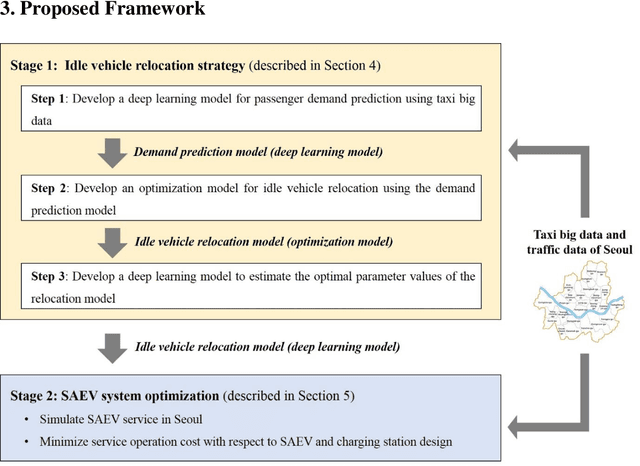
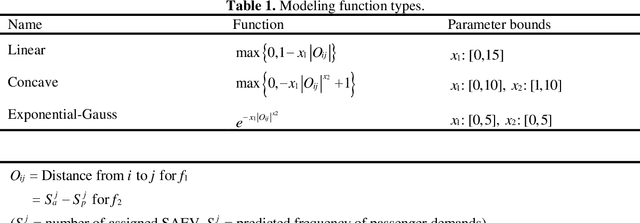
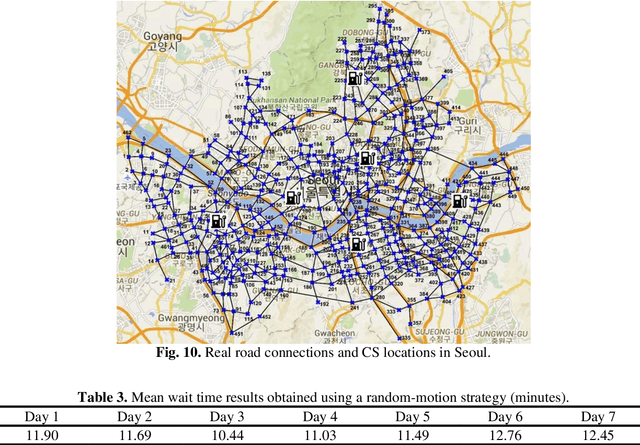

Abstract:In optimization of a shared autonomous electric vehicle (SAEV) system, idle vehicle relocation strategies are important to reduce operation costs and customers' wait time. However, for an on-demand service, continuous optimization for idle vehicle relocation is computationally expensive, and thus, not effective. This study proposes a deep learning-based algorithm that can instantly predict the optimal solution to idle vehicle relocation problems under various traffic conditions. The proposed relocation process comprises three steps. First, a deep learning-based passenger demand prediction model using taxi big data is built. Second, idle vehicle relocation problems are solved based on predicted demands, and optimal solution data are collected. Finally, a deep learning model using the optimal solution data is built to estimate the optimal strategy without solving relocation. In addition, the proposed idle vehicle relocation model is validated by applying it to optimize the SAEV system. We present an optimal service system including the design of SAEV vehicles and charging stations. Further, we demonstrate that the proposed strategy can drastically reduce operation costs and wait times for on-demand services.
Generative Design Exploration by Integrating Deep Generative Models and Topology Optimization
Mar 01, 2019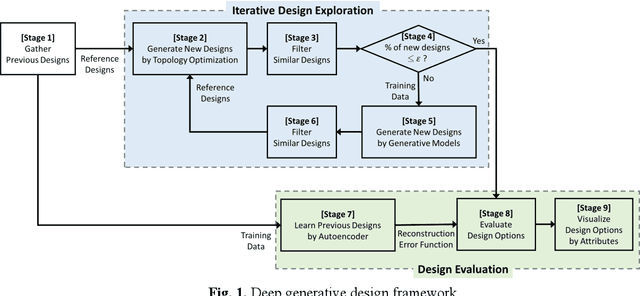
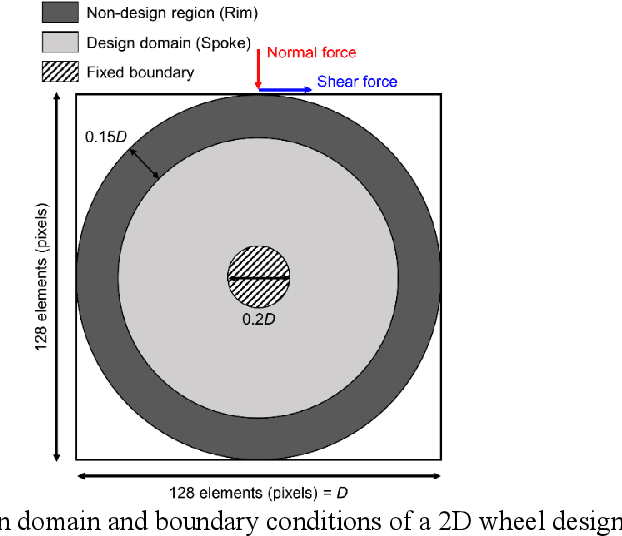

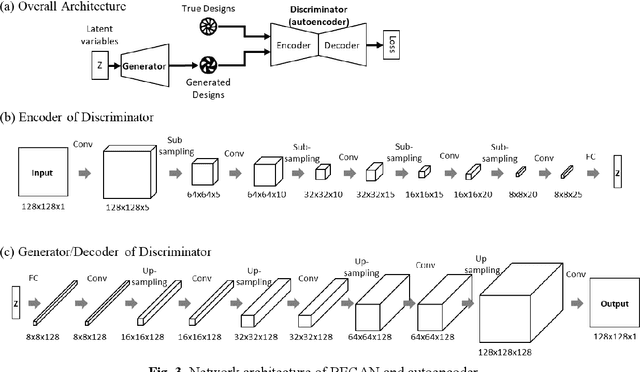
Abstract:Deep learning has recently been applied to various research areas of design optimization. This study presents the need and effectiveness of adopting deep learning for generative design (or design exploration) research area. This work proposes an artificial intelligent (AI)-based design automation framework that is capable of generating numerous design options which are not only aesthetic but also optimized for engineering performance. The proposed framework integrates topology optimization and deep generative models (e.g., generative adversarial networks (GANs)) in an iterative manner to explore new design options, thus generating a large number of designs starting from limited previous design data. In addition, anomaly detection can evaluate the novelty of generated designs, thus helping designers choose among design options. The 2D wheel design problem is applied as a case study for validation of the proposed framework. The framework manifests better aesthetics, diversity, and robustness of generated designs than previous generative design methods.
 Add to Chrome
Add to Chrome Add to Firefox
Add to Firefox Add to Edge
Add to Edge